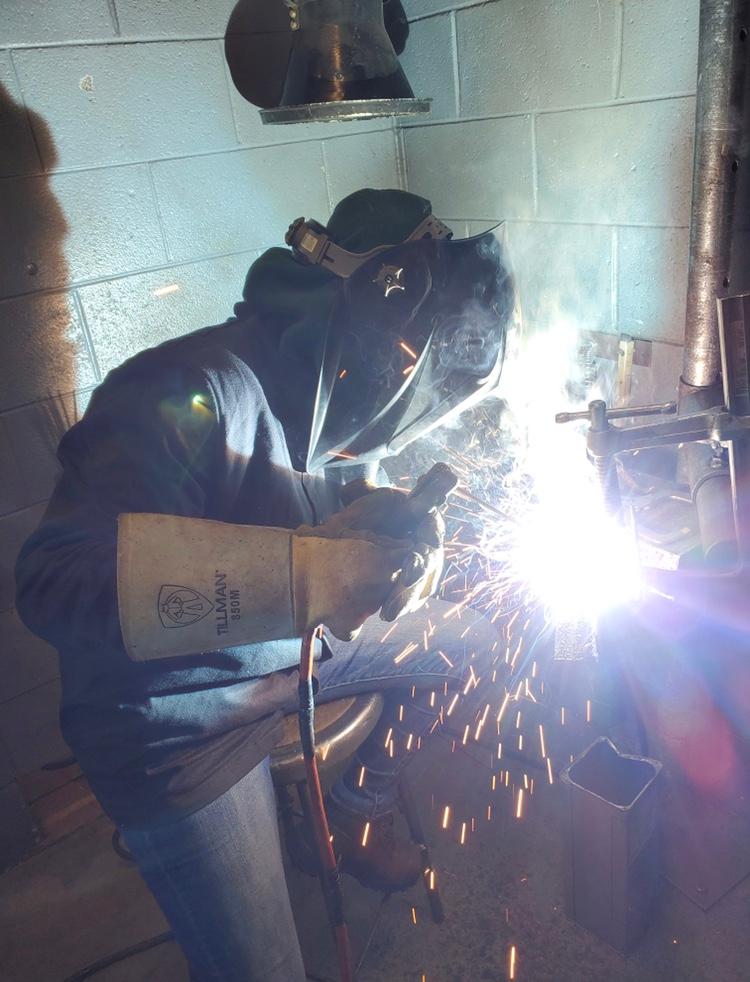
By Brandon Martin
As the campaigns in Germany and Japan pressed forward during World War II, many manufacturing jobs were left without employees to man their factories. In order to fill the holes left in the workforce, various media outlets began featuring the iconic image of Rosie the Riveter who spurred many women to apply for jobs traditionally held by men.
Between 1940-1945, the percentage of female U.S. workers rose from 27 to 37 percent and with their help, the American war machine abroad began to run like a well-oiled machine. The impact that women had during WWII forever changed the dynamics of the American workforce and the roles women held within it.
The inspiration that Rosie provided at the time is still vibrant today as women continue vying for jobs typically seen as being reserved for men. This time; however, they are driven by individual ambition rather than global tragedy. To see this trend in action, look no further than Patrick Henry Community College’s (PHCC) Welding Program.
“I think a lot of women think that they want to try it but they don’t because they think it’s going to be male-dominated,” Mary Hayzlett, a welding student at PHCC, said. “They think it’s going to be so tough that they can’t handle it but it never is.”
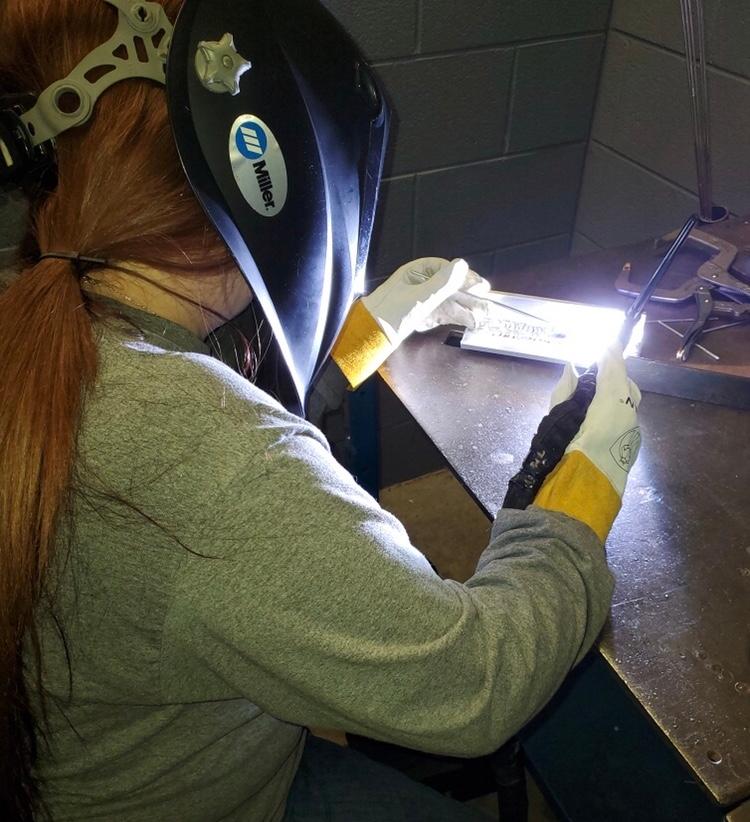
Hayzlett said that her male counterparts at PHCC have been very supportive in chipping away at the stereotype.
“They should just give it a chance because everyone is so supportive here,” the Bassett native said. “The men include you and they cheer you on and make you feel good about what you are doing. I was scared to death in the beginning. There was a woman that encouraged me to sign up and now I’m very happy that I did.”
Lezlie Stein, another welding student from Collinsville, agreed with Hayzlett but added that their experience wasn’t universal.
“Nobody picks on us for being girls or anything but I’ve met a lot of grown men that are welders in factories around here,” she said. “The minute I tell them I’m a welder, they criticize me so hard cause I’m small.”
Even though the physical demands are daunting at times, Stein said they are working on changing perceptions around the industry.
“You wouldn’t think that five hours of banging on some metal would be so tough but I don’t care if you are a male or female…it’s going to put some wear on your body. Because we are supposed to be frail and petit, they think we can’t do that,” she said. “Then you come in the back and see us covered in dirt, working so hard, it’s not like it’s not just a man’s world. We can do it.”
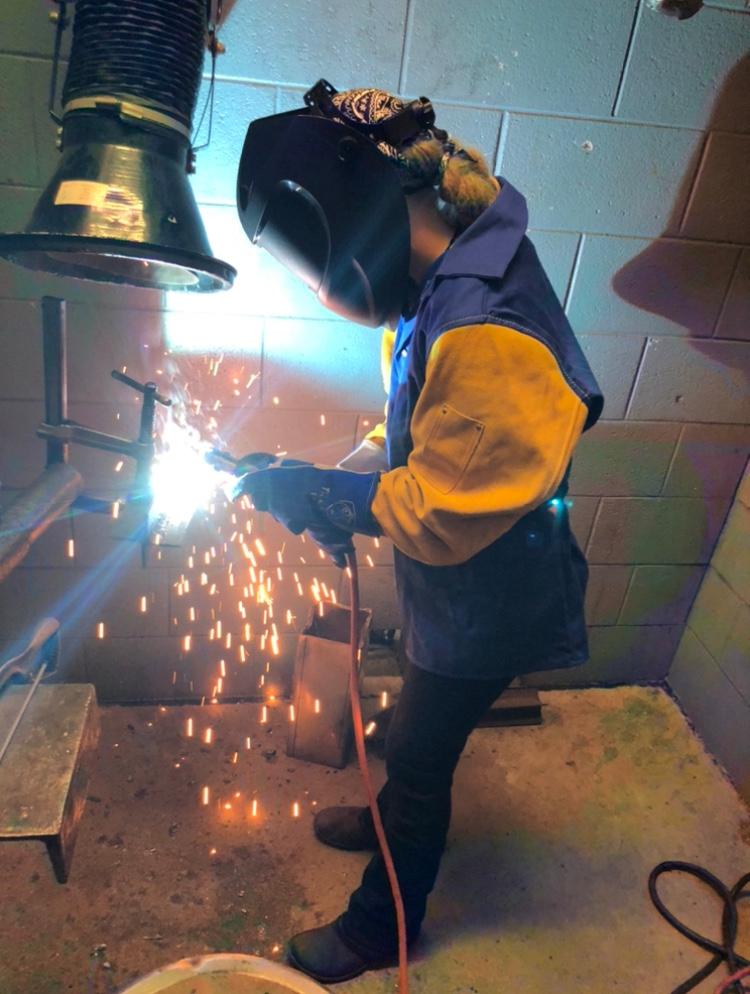
Stein isn’t the only one that thinks so either. According to their welding instructor Randy Smith, “women get into it and love it.”
“They are helping fill that gap. I think they are setting the footsteps for it. We used to rarely have female welders. Now, we’ve got a constant flow,” he added.
Until the idea of female welders becomes more of the norm, there are still some small hurdles for women in the industry. One of those comes in the form of equipment.
Stein said that among the gear, that welders wear, are boot cut jeans, high knee leather boots, leather jackets, helmets and overhead gear.
The only problem for fellow classmate Ashley Perkins is that the gear doesn’t come one size fits all.
“Jessi Combs came out with her own women’s line and it’s the one that I use,” the Franklin County native said.
According to Smith, Combs was an icon for female welders and thanks to the apparel line that she released before her death, women now have an option fitted to their sizing needs.
Until now, women have mostly been getting by with men’s small options.
“It’s sometimes hard to find gloves that fit you,” Hayzlett added. “Our hands our smaller so gloves are usually super huge.”
Stein even went as far as specially ordering all small gear that she “still have safety pins up the back of” just “so that it fits me.”
Along with the clothing, Stein said there are other aspects that women have to consider before entering a welding career.
“You can’t have nails or jewelry,” she said. “I’ve welded my favorite necklace before. I’ve welded a few of my earrings before. When they are hoops, you have to cut them with pliers just to get them out of your ear. I used to wear jewelry all the time but not anymore and I used to have long nails all the time but now I keep them just above my fingertips. I’ll break them when I’m hammering.”
Some might think that nails and jewelry wouldn’t be a big deal for women drawn to welding in the first place but according to the female students at PHCC, they come from a variety of different backgrounds.
“Everyone thought I would go away and be in a marching band but I quit the band for this,” said Zoë Cox, of Patrick County. “I just like welding more. I didn’t see a big future for that but with welding, I believe I can succeed a lot more.”
Similarly, Stein’s background didn’t exactly coincide with welding either.
“I was a cosmetologist,” she said. “I graduated high school with that certification and I did it for a bit. Most summer and I couldn’t decide what I wanted to go to college before but I knew I wanted to do something hands-on and this is the program that I wanted to do. I’m still doing cosmetology but I’m also doing this.”
When it comes to juggling multiple responsibilities on top of welding, these women are masters of the craft.
“I’m older and I have two kids, and I work so it’s been tough on me because some days I’m just so tired that I don’t want to go but I just stay with it,” Hayzlett said. “it’s just staying headstrong and not giving up. Even if I get super mad, just want to throw it all on the floor and quit, I just try to stay in it and not give up.”
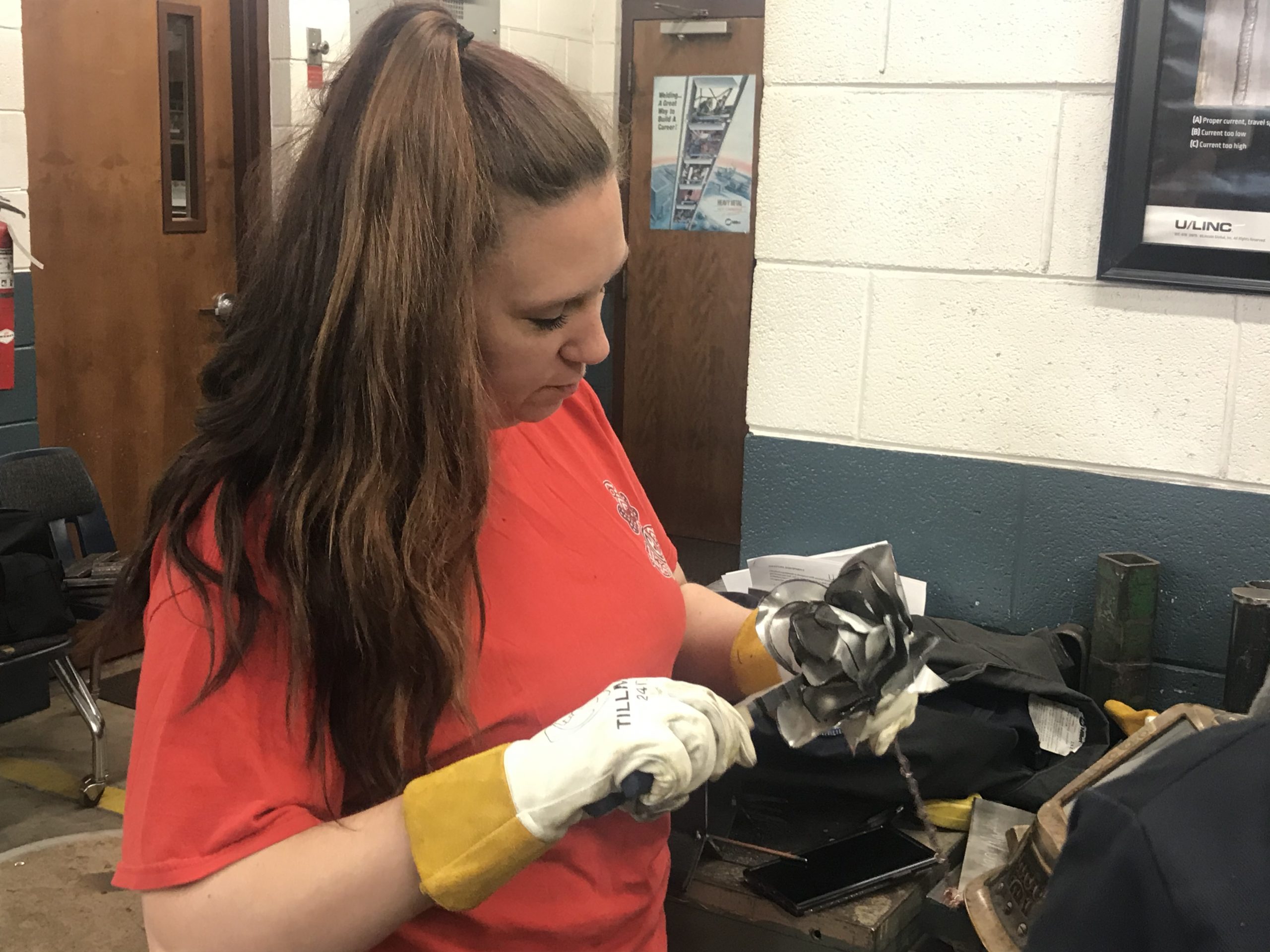
Hayzlett added that the challenges of the program start before you are even enrolled.
“I think I got here at like six o’clock to sign up. You didn’t have to be here until 8,” she said.
Stein said the program is highly competitive with many students being waitlisted due to limited space which the college is trying to address when their MET II Complex opens in Fall 2021.
“It’s really about how much determination you are put in because if you are late a few classes, then that’s it,” she said. “You get kicked out. If you can’t handle it or if you mess up the equipment, you get kicked out. You have to be extremely serious about it.”

Smith agreed and attributed success to the determination of his students.
“The reason they are successful is the driven part,” he said. “We run this shop like it’s a workplace. They come in, they sign in. We expect them to be here on time. They clean up their stuff after they finish. It’s the same as a job place.”
Throughout the coursework, Stein said the students can obtain up to seven different certifications, each with various positions to learn as well.
“You have to learn all of them to master it and when you take your test, you are given a backing plate and you have to fill up and make a complete solid weld with that specific angle or that specific type of rod,” she said. “Then you take it and get it tested. If it comes back as a solid weld then you pass.”
Welds are determined to be solid or not through numerous criteria.
“They x-ray it. They bend it. They treat it. They cut it in half and look at it. They use particle x-ray to see how solid it really is,” Stein said.
“And with stick and flux chord,” Hayzlett added. “You can’t have any flux in your weld at all or otherwise it would be split.”
Stein explained what flux meant as if she was teaching the class. “It’s a coating to protect the metal on the inside,” she said. “When you melt the metal, it’ll be on top of it. The metal you are actually welding with will go underneath it. You have to break it all off and scrub it to keep it clean.”
“It’s so nice when it just kind of pops off,” Cox said. “It’s the best feeling.”
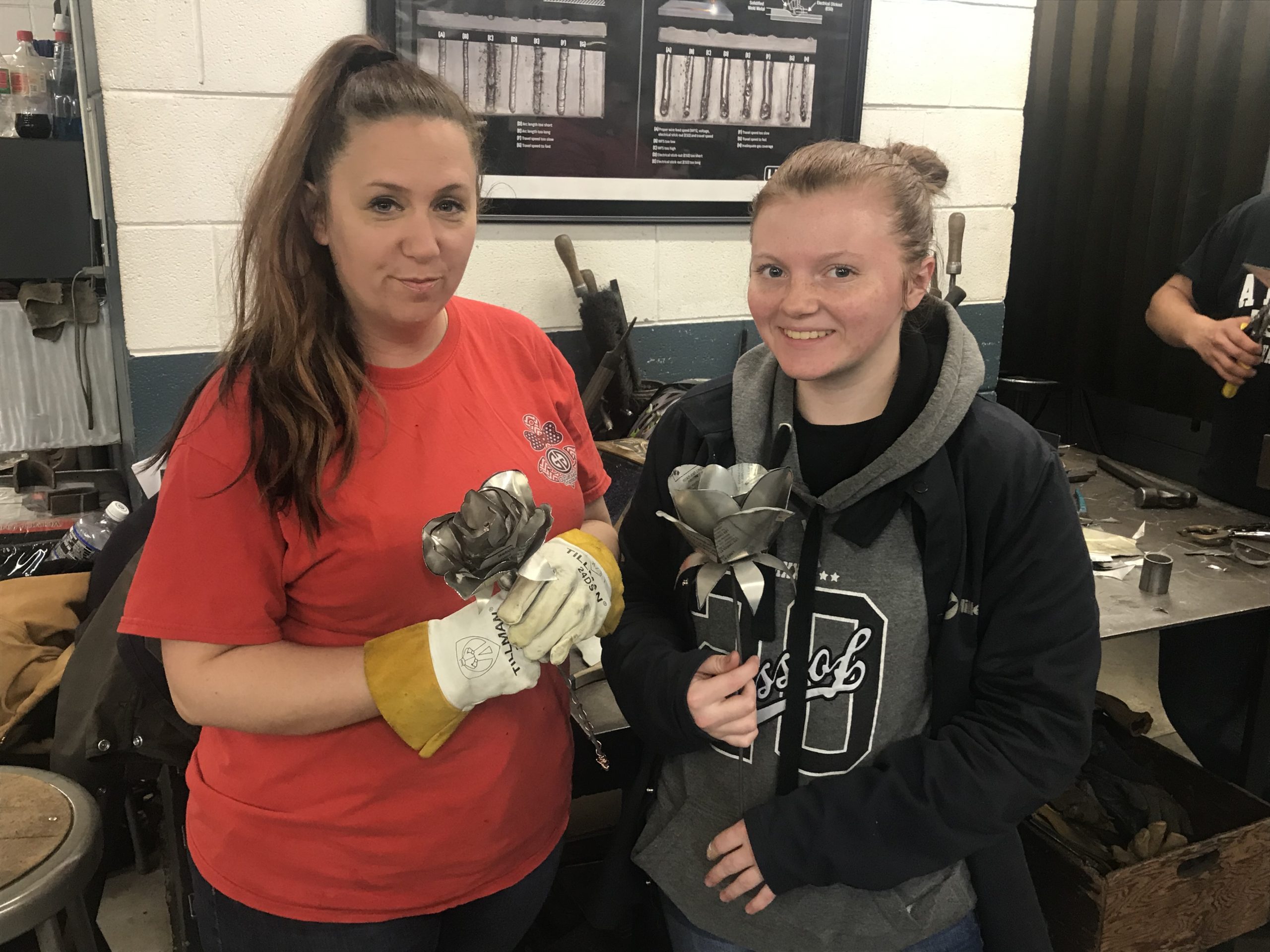
Welding is an ongoing exercise for Hayzlett, who said the hardest part about it was “keeping the same weld all the way across.”
If you can’t remain consistent, “the tiniest slight movement can mess up an entire section of your weld,” Stein said.
She added that the course isn’t a walk in the park either, naming various skills that a welder must excel at to make it to the top of their craft.
“One thing that I struggle with, that is a hard skill, is the applied mathematical technologies that you have to use,” Stein said. “I’m currently trying to get a tutor to step up our welding group because of the fact that the mathematics teachers do not teach the same kind of math that we have to learn. I struggle with the main types of math that we have to use which is fractions, decimals and the conversion of the metric system.”
Hayzlett said “the teacher will say go get an eight inch piece of metal and…”
“…you kind of have to eyeball it,” finished Stein.
Smith said that currently, the students enrolled in his program are excelling.
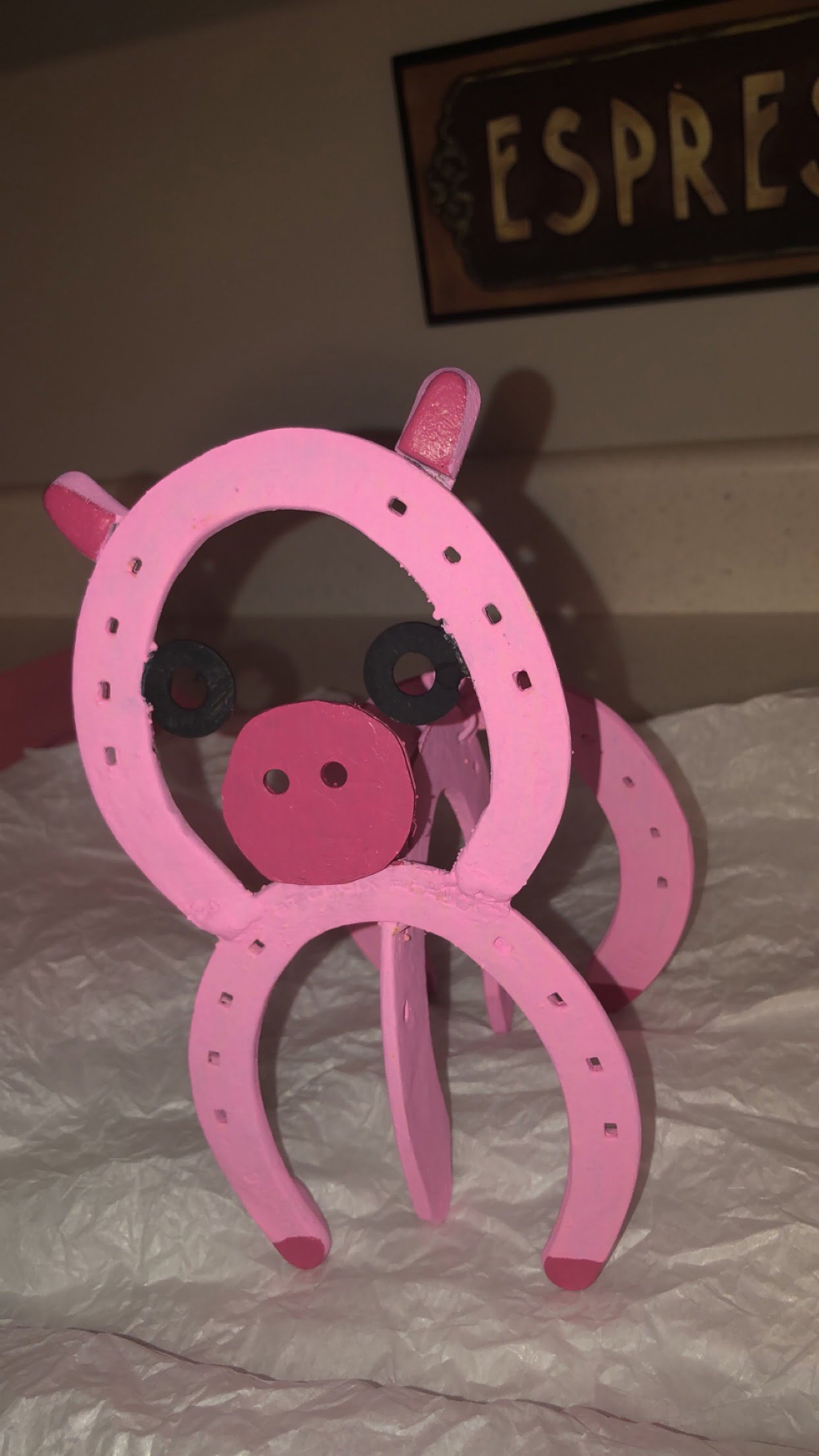
“Right now, we have a 100 percent pass rate,” he said. “That doesn’t mean that everyone is going to take seven certifications cause students do move at their own pace. But we do have several that have graduated with seven certifications and it allows you to apply for welding jobs all over the country, especially any welding job in our community.”
He added that on average, his students graduate with 3-5 certifications and an 80-90 percent job placement rate.
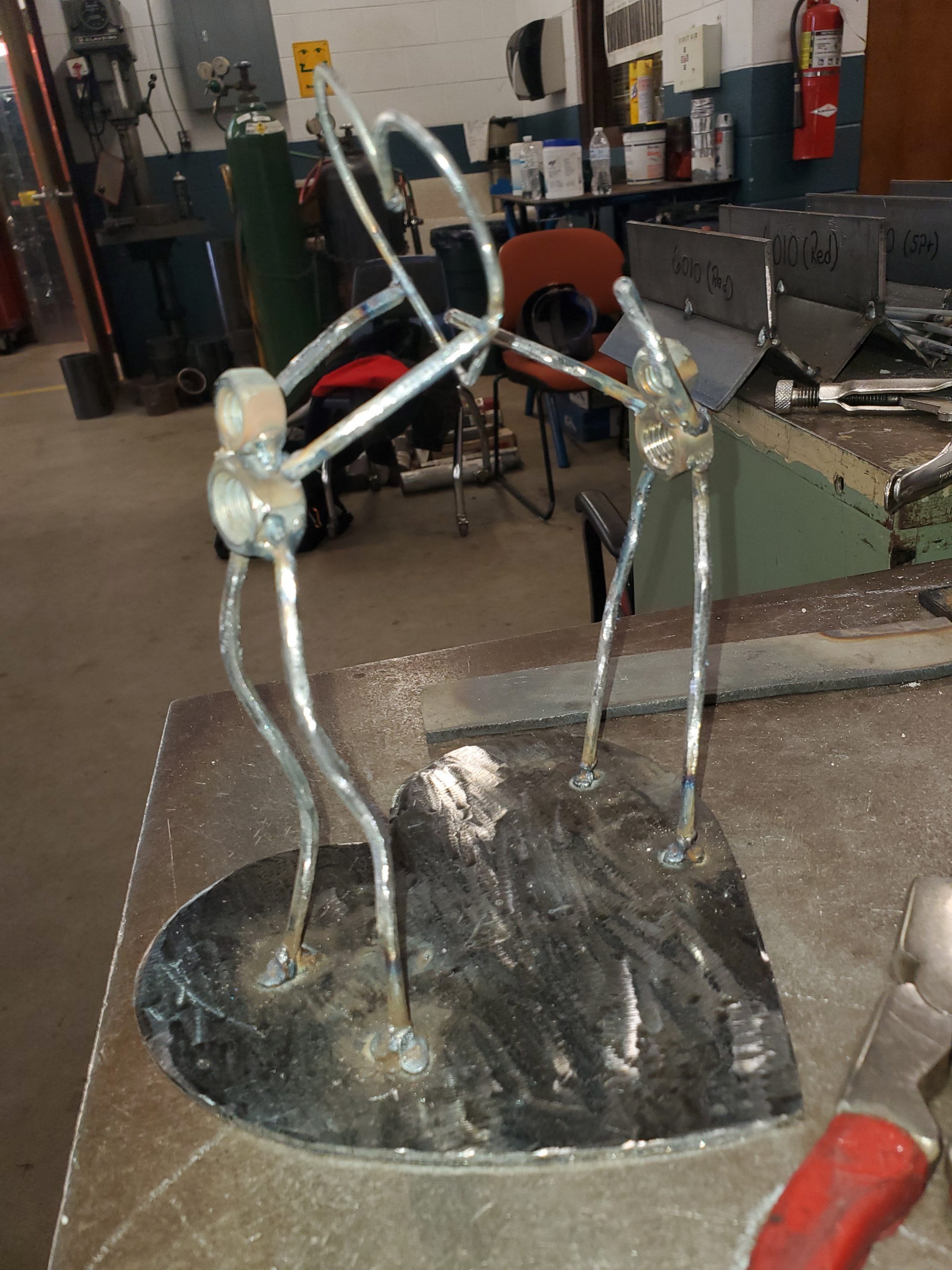
“I can’t think of a single welding place locally that doesn’t have PHCC welders,” Smith concluded.
By enrolling in the program at PHCC, Stein said the sky is the limit for graduates and that the knowledge will allow her to realize her dreams.
“Part of my goal is finding where i want to settle down by traveling to all the states and experiencing all of them so I want to work in every state,” a very real possibility since “we get national certificates so we can go anywhere we want to and use them.”
“I want to be able to see my work all over the country.”




